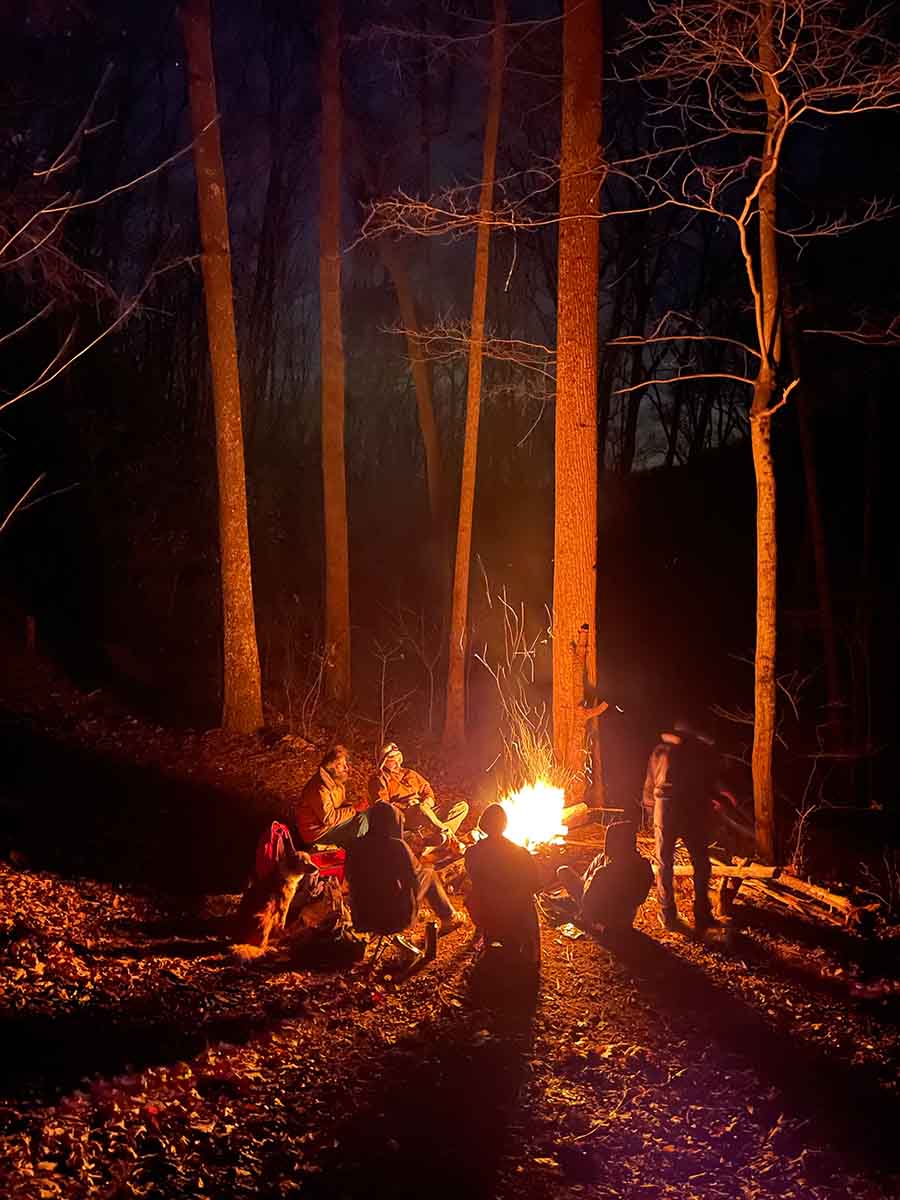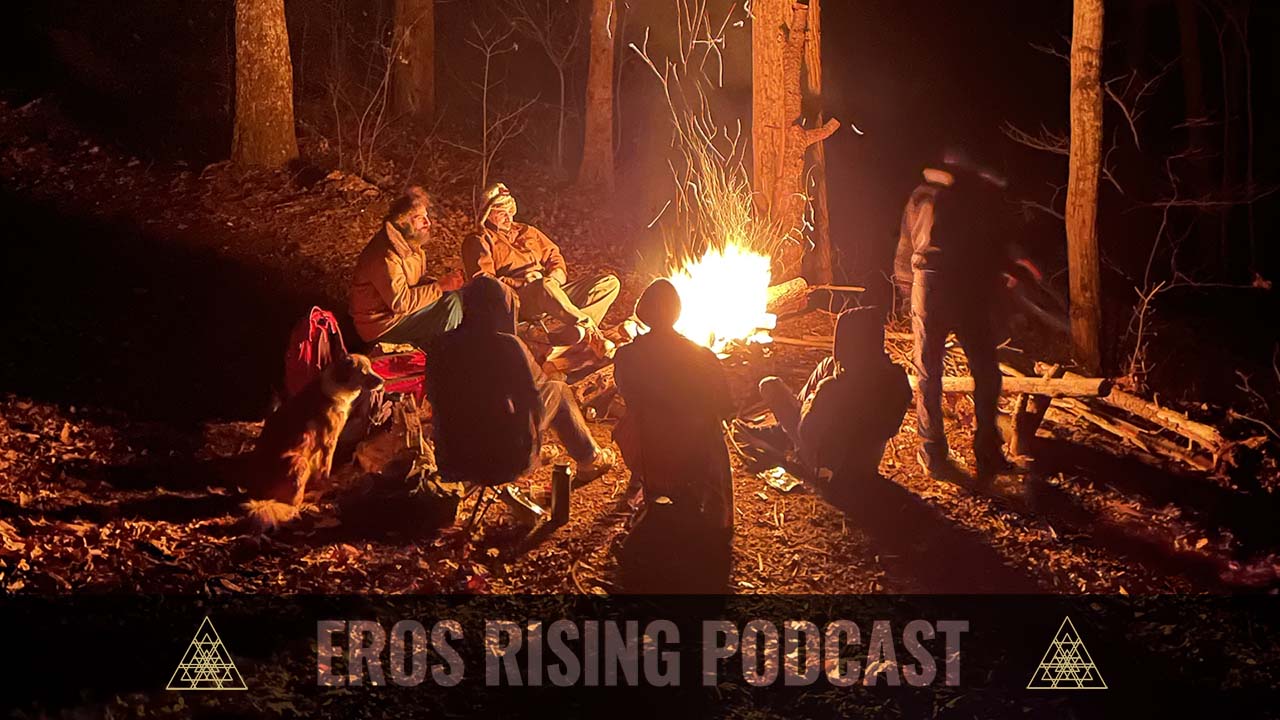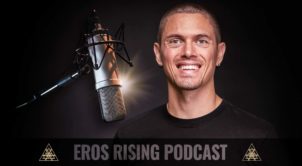On this page…
The recording from my live workshop “How to Start a Men’s Group” (Podcast above)
A complete guide to starting, structuring and running a successful men’s group (below)
A list of organizations to explore if you want to go deeper with men’s work (below)
Context for this episode… (Full Guide Below)
The podcast episode above is a recording from the “How to Start a Men’s Group” workshop I led in March 2022. You’ll hear a mix of authentic personal stories with practical action steps you can take if you want to start your own men’s group.
After the workshop I got inspired to create a full written guide on creating men’s groups too. You’ll find that below. If there’s anything you think would make this guide better, please let me know via email. Thank you friend! We’re in this together.

Guide to Starting a Successful Men’s Group
To start things off, let’s clarify the question: what is a men’s group? In this context, I’m referring to a group of men who commit to getting together regularly with some kind of mutually agreed-upon intention for how the meeting time is used. This is different from just getting together with the guys to drink a beer or play basketball… And, there are lots of different kinds of men’s groups. We’ll get into some examples throughout this guide. If you want to start a men’s group, the first thing you need to do is:
1. CLARIFY WHY YOU WANT TO START A MEN’S GROUP
It’s important for a men’s group to have a specific focus. Without a clear WHY for meeting regularly, you’ll have a challenging time finding men to join. Also, if you get men to join without a clear why, your group will probably fall apart quickly. Your WHY will help determine what kind of men’s group you’ll create.
For example, I’ve been in 2 different business mastermind men’s groups. These groups were amazing for helping us achieve our business goals, but there wasn’t much emotional depth. Emotional depth wasn’t what we needed in that group. Another time, I was part of a men’s boxing group, with the intention of upleveling our boxing skills. All three of these groups were amazing, and they’re different from the kind of group I’m focusing on in this article.
Today, the men’s group I’m in is focused on depth, authenticity, accountability, support and realness. We have 11 members, we meet at a regular interval of once a month, and we follow a structure when we meet to maximize the impact of our time together. Our intentions are to show up to meetings with full presence, to be real and share about our lives. We witness each other and support each other with whatever we’re going through. Crying is invited, tears are invited, anger is invited, and shame is invited too – for the sake of growth, connection and support.
Questions to ask yourself: What kind of men’s group do you want? Do you want a group that prioritizes emotional depth? What about a group that focuses primarily on doing physical practices together? How about a group that is centered on business growth or creative projects? Etc…
2. CREATE THE LOGISTICAL FRAMEWORK
How many people do you want in your group?
4 people? 8 people? 12 people? There are benefits to different sizes, but I’ll say that if emotional depth is the goal, it becomes challenging to do this with more than 6 people at a meeting. Not impossible, but in terms of the amount of time it can take in one meeting for everyone to share and be heard, 6 people is a lot. The longest men’s group I was part of met regularly for over 8 years, and there were only 4 of us.
How often do you want to meet?
Once a week? Every other week? Once a month? Again, there are benefits to all, and this might depend on the type of group you choose. My mastermind groups met once per week and every other week, and the boxing group met once per week. The current group I’m in meets once per month, and this works well for our schedules because we’re all busy people with busy lives. We schedule our meetings out months in advance, and prioritize them over most other things.
How long do you want the group to run?
3 months? 6 months? Indefinitely? One of my mastermind men’s groups started with the agreement to meet every week for 3 months and then pause to evaluate the success of the group. The group was a huge success for all of us, and at the end of the three month period, we decided not to continue the group for a variety of reasons.
The boxing group didn’t have a set timeline, so we met regularly at first, and then over time the interest faded, and people stopped showing up as often (myself included). Eventually this led to the group closing because there just wasn’t enough consistency.
The group I’m in now meets indefinitely, and we’ve playfully joked about what it’s going to be like when we’re all in our 60s and still meeting. The intentionality, depth, connection and friendship in this group is rich, and it gets more rich over time… which is one of the reasons we stay engaged.
Is participation mandatory?
In the 8+ year group I was in with just 4 members, we only met if all four of us could meet, so in that sense it was mandatory. In that group we prioritized this so highly that I think we only missed 2 or 3 months in 8+ years. The group I’m currently in has 11 members, and monthly participation isn’t mandatory. We all live busy lives, and we have an understanding that it’s not always possible to sync 11 people’s schedules every month.
Is there a leader?
Does one person lead the group? Does one person facilitate the meetings? Is there shared leadership? Do you rotate facilitation at meetings? I’ve heard of groups where one person is the leader, but I haven’t personally experienced this. All of my groups have been group-led. In some of the groups we’ll rotate the person who actually facilitates the structure of the in-person meeting, but that person isn’t the leader of the group.
Can new people join, or is it a closed group?
It’s useful to have structure and agreements around this, because it’ll definitely come up at some point. My current group isn’t open to new members.
Is your group a public or private entity?
This is an interesting thing to think about. It came up for the first time a few months ago in my current group. As a group, we were invited to do a specific thing together as a group, and this brought up a process for us. Long story short, our group decision was that we do not respond to things or take action in the world as a group. If someone brings an invitation to one of our group members, we all decide as individuals whether we want to do a thing. Not as a group entity. THE focus in our group is showing up for each other in support, depth and presence.
Do you have to do it all by yourself?
Important side note – one of the pain points & oppressions men receive from society is the story that we need to create and do everything by ourselves. One option would be to go through the first two steps by yourself. Another option could be to co-create your WHY and logistical framework with another guy as a team. I know a handful of groups that started this way – with two guys who decided they wanted to collaborate and create an awesome men’s group. It’s a great option.
3. FIND & INVITE MEN TO YOUR MEN’S GROUP
Once you clarify the above steps, it’s time to invite men to join you. This could feel exciting and anxiety-provoking, because it requires some level of vulnerability. Being invited to a men’s group isn’t something most people are used to, so it’s useful to use intention when extending an invite. Even still, you might get a response like: “You want me to join a what?”
When you DO decide to invite someone into your group…
I suggest beginning your invitation with an authentic appreciation of the person you’re inviting in. You could say something like this: “Hey man, I really appreciate and respect how you show up in the world. It’s inspiring to me, and resonates with how I like to live my life too.” Men rarely share things like this with each other, so when you do, it has the potential to make a big impact and create an opening for deeper closeness.
Then to bring in the topic of men’s groups, you could say something like this: “I’m in a place in my life where I want to build deeper connections with men that I resonate with, and for part of that, I’m starting a men’s group.” Then describe what a men’s group means to you. Then say something like “I think it would be awesome to be in a men’s group like this with you. How does this sounds to you?”
Lean into the edge of vulnerability here. Vulnerability is a muscle that gets stronger the more you use it, and over time you’ll notice that it feels really good.
4. HOW TO HOST YOUR FIRST MEETING
Congratulations! You have a group of men who are interested! Now It’s time to host your first meeting. I suggest hosting your group in a space where you will not be disturbed by other friends, neighbors, children, attractive humans walking by or pets. I suggest setting an arrival time, and having it be slightly earlier from the actual group start time. For example, you could say arrive at 6:30, and also say that the group will officially begin at 6:45. This gives space for the natural period of small talk and banter that happens when people first come together. I also suggest providing snacks.
1. To begin the meeting…
At 6:45, or whenever your group officially begins, I suggest ritually doing something to signify the beginning of your meeting. You could take 5 deep breaths together, play a chime, do 10 pushups then clap your hands, it doesn’t matter. Just do something to signify that NOW the group is officially beginning.
2. Use a “talking stick”
To help with the flow of your meeting. A “talking stick” can be any item that someone holds while they’re talking. While one person is holding the talking stick, nobody else talks, unless it’s to ask purely for clarification on something they didn’t understand (more in this later in the structure section). If you’re the initiator of this meeting, then you should introduce the concept of this talking item, and hold it while you welcome everyone to the space.
3. Set & Agree on Confidentiality
Before anything else is said, I suggest getting everyone’s agreement about confidentiality. In our group, we have an agreement not to talk about anything that was shared in the group with anyone who is not part of the group – INCLUDING our romantic partners. This creates a profound level of safety, trust and support that is crucial for allowing you all to go deep with each other. Get everyone to visibly raise their hands in agreement, then express gratitude for everyone showing up, and continue on…
4. To build connection, start with rounds of personal shares.
I suggest starting with a short round of 1 minute per person (that we call a lightning round), where you pass the talking stick, and each guy says out loud what they’re “showing up with,” and how they’re feeling in their body in that moment. For example, someone could say:
“I just had a long workday so I’m mentally tired, but I went on a run right before this group so I’m feeling great. In my body, I feel relaxed, warmth in my feet, and some tightness in my legs.” This is a practice of paying attention to the body, which will bring you all into more connection with each other.”
Then for a second round, I suggest giving each man 2 – 4 minutes (and actually timing this with a timer) depending on group size, to share their desires, fears and intentions around being part of this group. It can be helpful after each person finished sharing for everyone to take a deep breath together too – before moving on to the next person. For example, someone could say:
“I’ve been feeling like I want deeper connection with men in my life… like I’ve been missing a kind of brotherhood, and one of my hopes for this group is that I’ll be able to go deep with you all, and form deep friendships. I’m afraid that my fear of vulnerability will keep me from talking about the things I really want to talk about, and my intention is to work through that and talk about those things anyway. I also have the intention to show up fully with presence for all of you in this group, and to listen deeply when you share.”
5. Then go over your group agreements.
You may have talked to everyone individually before the group, but it’s really important to speak to the structure and agreements of the group – AS A GROUP. How often will you meet? Is attendance required? How far in advance will you schedule? Etc…
During this time it’s also helpful to talk about the structure of your group time together, and come to some agreements and intentions for how you’ll flow through that structure as a group. I’ll share an example structure you can use in the next section, and you might want to do a version of this in your first meeting.
6. Close the meeting
At the end of your first meeting, make sure you all have dates in your calendar for the next meeting, and then officially “close” your group time with some other ritualistic thing to signify the end of your official time together.
4. HOW TO STRUCTURE YOUR MEETING TIME
In my current group, we arrive and have a period of small talk & banter, and then at a certain point our group officially begins. Our ritualistic way of beginning usually involves some moments in stillness & silence, followed by taking some deep breaths. Here’s a simple 5-step outline of the progression of our meetings:
- Arrival, small talk & banter
- Ritualistic beginning of the group
- Lightning round of quick check ins
- The deep round
- Closing
1. Arrival
Show up on time. Just do it. Bring snacks too. Everyone likes snacks.
2. Ritualistic beginning
Take some breaths together, do push ups, whatever. Just do something to signify the official beginning of the group time, which brings in the talking stick.
3. Lightning round of check ins
Using a timer, for 60-90 seconds each do a quick round of what you’re showing up with, and how you’re feeling in your body. IMPORTANT: In my group, at the end of each share in the lightning round, each person says a number between 0-10 to signify the amount of charge, distress or excitement for sharing in the deep round. 0 is no charge, and 10 is meltdown/ecstasy. The point of this is to let whoever has the highest numbers to go first in the deeper round, so they can let off some of their charge and be more present for the rest of the group.
4. The deep round
Take note of the total time you have available for meeting that night, and then based on the amount of people there, divide that time into equal chunks. Then subtract a few minutes from each chunk for the sake of transitions, bathroom breaks and closing.
For example, if there were 6 people at a meeting, let’s say we finished the lightning round at 7:15. After a group time check, it’s clear that our meeting needs to stop at 9:45 sharp so one of the members can get back to his kids. That means we have 2.5 hours (150 minutes) for everything else. 150 minutes divided by 6 people = 25 minutes per person. Accounting for transitions, bathroom breaks and closing, we decide that each person’s deep round will be 20 minutes.
4.5. Structuring the Deep Round
Then each person gets to create a sub-structure for their deep round, deciding HOW they want to use their time. They could ask for 10 minutes of speaking followed by 10 minutes of group reflection & problem-solving, or 5 minutes of speaking with 15 minutes of reflection, or 20 minutes of speaking without any reflection at all. During the reflection phase, the original speaker can hold onto the talking stick while others give their feedback. If you are the speaker, it’s really helpful to be clear on what kind of reflections and feedback you would like to receive from the other men. Do you want empathy? Advice? Problem solving? Etc… Speak to this. The other men are there in service to you during your turn.
Once the substructure is determined, a timer can be started, and that person’s round can begin. A note about timing, if the person who’s turn it is is in high distress or charge about something, they may not know or care what sub-structure they need, they might just want to start talking or emoting… so the timer/round could just start without any sub-structure.
Because the per-person time was changed from 25 minutes to 20, there is a bit of leeway here for people to finish their sentences or thoughts if they’re in the middle of something profound… but be intentional with this. Try to stick to the timers as much as possible, with an open heart for whatever may be necessary for someone’s process to complete.
5. Closing
It can be nice to take some deep breaths together and sit in silence for a minute after the last person shares. Then do something to signify the closing of the deep round… maybe some deep breaths together, maybe a qigong move, something. Then make sure you all have the next meeting date on your calendars. Finally, if you have time, it can be really nice to end with a quick round of gratitudes for the group. Then find some way to ritualistically close the group, and move into whatever you move into next.
5. WAYS TO IMPROVE YOUR MEN’S GROUP
If you’re already in a men’s group, incorporating some of these things could help bring you closer together. (And if you’re starting a men’s group, consider adding some of these things in as part of the culture of your group).
Get outdoors and go camping
Turn your phones off, go outside and immerse yourself in nature with your men’s group for a whole weekend. There’s nothing like it. This can be an incredible way to spend time together. My men’s group does this twice per year, and our camping experiences have been some of my favorite group experiences.
The photo here is from one of our overnight men’s groups where we went camping outdoors close to Asheville. Instead of taking the trail to the camp spot, we decided to hike straight up the river with backpacks on, because adventure. 🙂

Create a project together
Men can bond deeply when working as a team to create things and accomplish tasks together. This could be anything, and will be determined by the shared interests of your group. Here’s an example from my group: This year, we’re going to work on a friends land, clearing brush & invasive species, and building a wood-fired sauna deep in the woods. This is a win win win for us because not only will we literally build something together, but the thing we’re building will provide an environment for us to continue to meet and deepen over time.
Have an emergency response agreement
In my 4-person 8+ year group, we had an understanding that if anyone hit a serious life crisis point, they could text the group and we would drop whatever we’re doing and meet in person as quickly as possible. This happened around 6 times over the 8-9 years we met, and the level of support and solidarity I experienced with this was incredible. There’s nothing like having a team of brothers like this.
Explore ceremony & altered states of consciousness together
This isn’t a blanket recommendation for you to go out and take acid or mushrooms with your group… that would take great planning & intention. Also, remember that you can experience altered states of consciousness without any drugs at all, through breathwork. Being in these altered states with groups of men can be incredibly powerful. If you want to go deeper into learning about the power of altered states of consciousness in groups, check out the book “Stealing Fire.”
6. MEN’S WORK OPTIONS TO EXPLORE
Sacred Sons
I did a “Convergence” retreat in 2021 with Sacred Sons out in the desert of San Diego, California. It was a great experience that pushed me to my edges and gave me an opportunity for me to really step up for myself and my life. Also, the inspiration to create my the Eros Rising Podcast hit me at the end of this retreat. One of the things I deeply appreciated about Sacred Sons was the diversity of men who were there. Sacred Sons goes out of their way to bring in men from different backgrounds, and it really impacted the space in a powerful way. It was by far the most diverse men’s work workshop I’ve ever experienced.
There’s a “cool” factor to Sacred Sons that some people will love and some people will hate. Their epic instagram videos & photos definitely helped draw me in… and when I was there, in addition to the deep work that was happening, I felt like it was the “cool” thing to do to be there. Not sure how else to say it. It’s a double edged sword, because on the one hand the “cool” factor is helping this work reach more men around the world. On the other hand, it turns some men off and some don’t feel included in the “coolness.” Obviously you’ll need to do your own research.
Mankind Project
The Mankind Project (MKP) was my first direct experience with “Men’s Work.” I did their “New Warrior Training Adventure” (NWTA) back in 2016, and after that I did a number of follow-up workshops too. It was an awesome and frustrating experience at the same time. The NWTA is designed to challenge you, and the challenges were frustrating. At the same time, the challenges also helped me experience the joy of pushing through my edges.
The MKP has local groups all around the world that meet weekly. I went to one of these groups in Asheville for a few months after their NWTA, but lost interest. If Sacred Sons has a “cool” factor, then Mankind Project definitely has a “stale” factor. At least, that was my experience. The work was profound, and something about the Mankind Project felt a little vanilla too.
One of the things I love about MKP is that it’s VERY affordable to do their workshops, and a ton of volunteers show up at each event to help make it happen. Almost as many volunteers as participants. That really moved me in my NWTA. There was medicine for me in just that alone.
John Wineland
I took a 9-month Embodied Masculine online course with John Wineland, and have taken a number of his free online offerings too. I’ve never met him in person, but I constantly refer people to him. He is one of the best models of presence I can think of. I watch his videos sometimes just to feel him speak. There’s wisdom transmitted in simply how he talks.
David Deida
I took an in-person Men’s Purpose & Sexuality workshop with David Deida a few years ago, just outside of Asheville. Over 100 men showed up from all around the world for the workshop. And in terms of the high-level caliber of facilitation and guided practices, it was one of the best men’s workshops I’ve ever been to. This workshop helped me experience a true, embodied integration of my sexuality and spirituality… for the first time in my life.
International School of Temple Arts (ISTA)
This organization isn’t necessarily “men’s work,” but the processes I went through in my ISTA retreats were some of the most profound and growthful experiences I’ve ever had. I regularly refer people to ISTA, have gotten my closest friends to go, and literally every single person has said it was well worth it.
As a heads up, ISTA retreats are intense. They go directly into work around personal sovereignty and sexual shadow, and it can be VERY confronting. You’ve been warned. Adventure at your own risk.
7. CLOSURE, SUGGESTIONS & REQUEST:
Is there anything you think would be helpful to add to this guide? If so, please shoot me an email and let me know. I’m sure there are some things I’ve missed. I want to make this resource as awesome as it can be, because men’s groups have changed my life, and I want to help more people have this experience. Please feel free to share this article & podcast episode with your friends
Request: If this guide or podcast has been helpful for you in any way, could you please take 30 seconds right now to leave a positive review for my podcast on either Apple or Spotify? That would be meaningful for me to receive in exchange for creating these free offerings for you.
Thank you friend! I hope you have an amazing rest of your day.
-Taylor
EPISODE MUSIC:
“Pink Dolphins” (Numatic Remix)
Written by: Tony Moss/Sunny Solwind/Shireen Jarrahian/David Brown
Remixed by: Numatic
Want to Support This Podcast?
Share this podcast with your friends!
Buy me a drink and directly support the creation of new episodes. Thank you!
Leave a review on Apple Podcasts or Spotify - it helps get this Podcast out there, AND it helps me know that you care. 🙂




